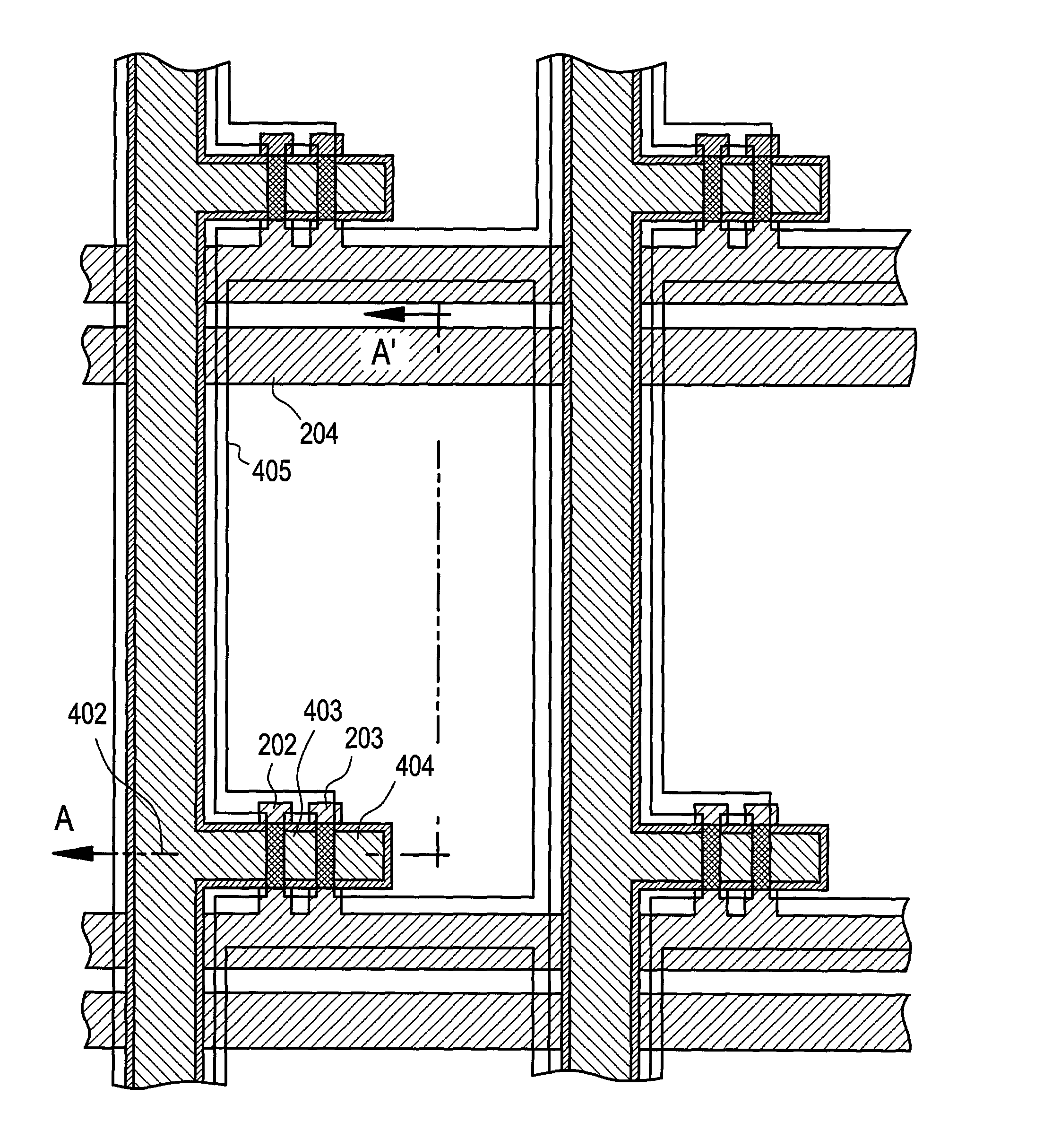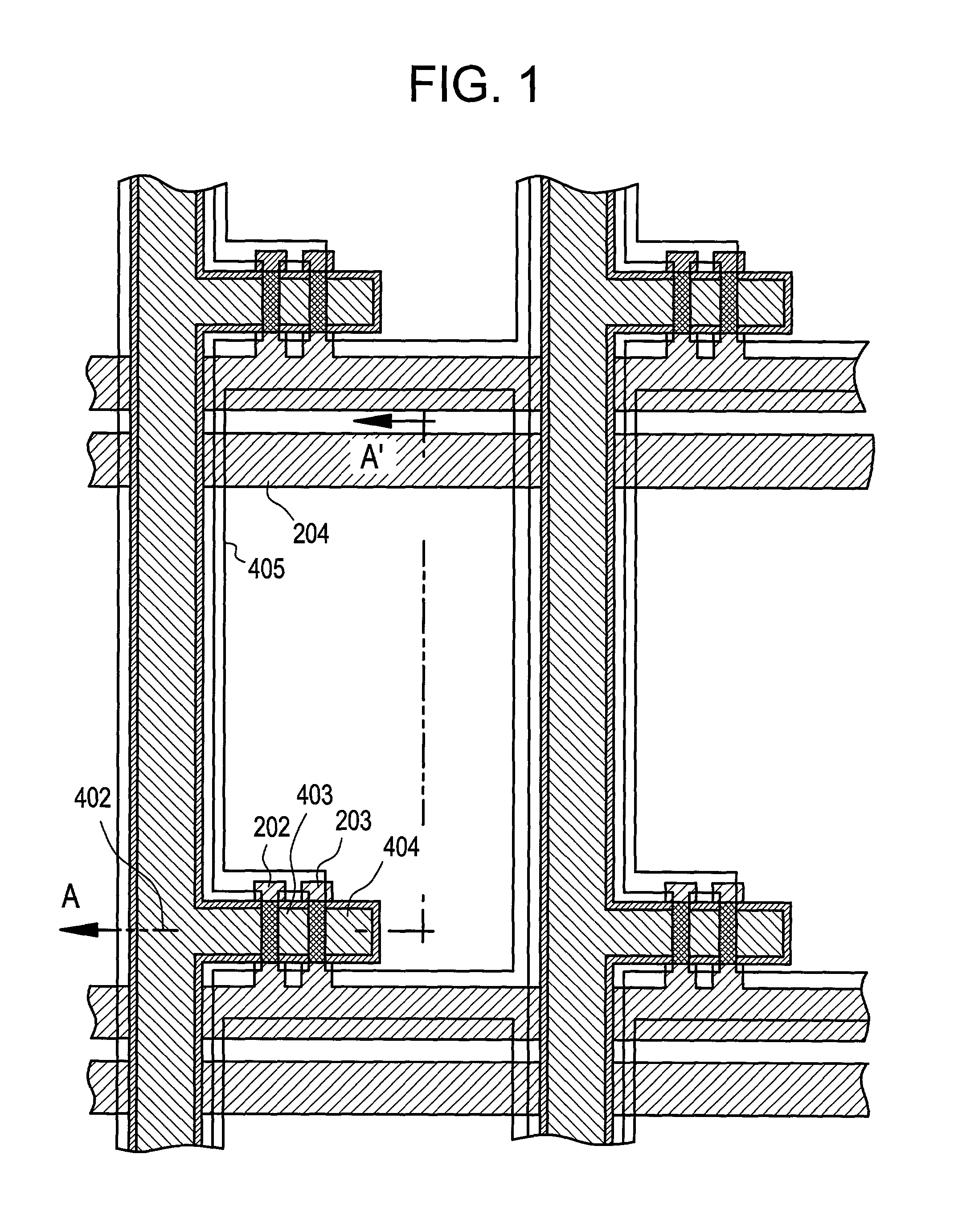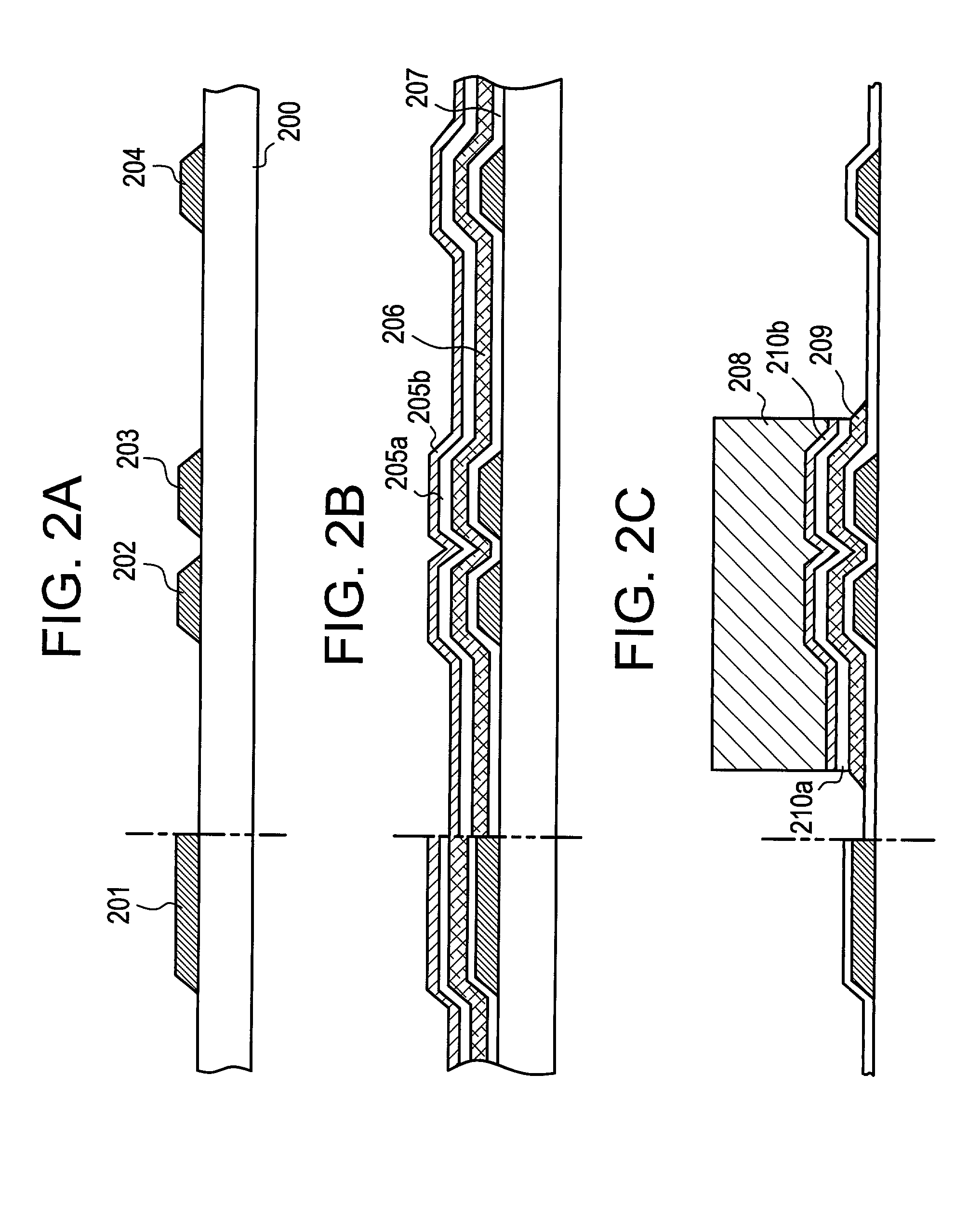Semiconductor device and manufacturing method thereof
a technology of semiconductors and manufacturing methods, applied in the direction of transistors, optics, instruments, etc., can solve the problems of poor coverage, complicated tft manufacturing, and fear of film being cut at a step
- Summary
- Abstract
- Description
- Claims
- Application Information
AI Technical Summary
Problems solved by technology
Method used
Image
Examples
embodiment mode 2
[0107] First, a conductive film is formed on the entire surface of a substrate. The conductive film is formed into a desired shape through a first photolithography step. Later, the conducive film is etched to form a gate electrode or a gate wiring or a storage capacitance wiring.
[0108] Next, an insulating film is formed on the entire surface of the conductive film. Later, the insulating film functions as a gate insulating film. A first amorphous semiconductor film and a second amorphous semiconductor film containing an impurity element with one conductivity type (n-type or p-type) and a conductive film comprising metallic material (metallic material containing Al, Ti, Mo, Cu, Ta, Cr, Ni or Mo as a main component) are deposited on the insulating film.
[0109] Then, an unnecessary portion of the layered film formed of the first amorphous semiconductor film and the second amorphous semiconductor film containing an impurity element with one conductivity type (n-type or p-type) and the con...
embodiment 1
[0115] Embodiment 1 of the present invention will be described with reference to FIGS. 1 to 4B. In Embodiment 1, a manufacturing method of a liquid crystal display device is described. A method of manufacturing an inverse-stagger TFT in a pixel portion on a substrate and manufacturing a storage capacitor to be connected to the TFT will be described in detail in the order of the manufacturing steps. In FIGS. 2A to 4B, a terminal portion, which is provided at the end of the substrate so as to be electrically connected to a wiring of a circuit provided on another substrate, is also illustrated in the steps of manufacturing a TFT. The cross-sectional views of FIGS. 2A to 4B correspond to the cross section taken along a line AA-A' in FIG. 1.
[0116] First, a display device is manufactured by using a substrate 200 with light transmittance. As the substrate 200, a glass substrate such as barium borosilicate glass and alumino borosilicate glass, as represented by #7059 glass and #1737 glass m...
embodiment 2
[0134] The semiconductor display device including the channel etch type TFT in the pixel portion has been described in Embodiment 1, while a semiconductor display device including a channel stop type TFT in the pixel portion will be described in Embodiment 2 with reference to FIGS. 5A to 7C.
[0135] First, a semiconductor display device is manufactured by using a substrate 500 with light transmittance. As the substrate 500, a glass substrate such as barium borosilicate glass and alumino borosilicate glass, as represented by #7059 glass and #1737 glass manufactured by Corning Inc., can be used. Besides, a light transmitting substrate such as a quartz substrate and a plastic substrate can also be used as the substrate 500.
[0136] After forming a conductive film on the entire surface of the substrate 500, a first photolithography step is conducted to form a resist mask. An unnecessary portion is removed by etching to form gate electrodes 502 and 503, a storage capacitor wiring 504, and a ...
PUM
 Login to View More
Login to View More Abstract
Description
Claims
Application Information
 Login to View More
Login to View More - R&D
- Intellectual Property
- Life Sciences
- Materials
- Tech Scout
- Unparalleled Data Quality
- Higher Quality Content
- 60% Fewer Hallucinations
Browse by: Latest US Patents, China's latest patents, Technical Efficacy Thesaurus, Application Domain, Technology Topic, Popular Technical Reports.
© 2025 PatSnap. All rights reserved.Legal|Privacy policy|Modern Slavery Act Transparency Statement|Sitemap|About US| Contact US: help@patsnap.com



